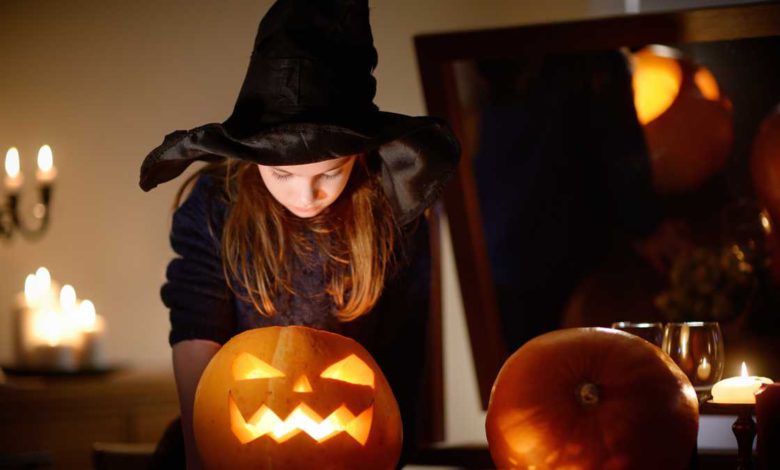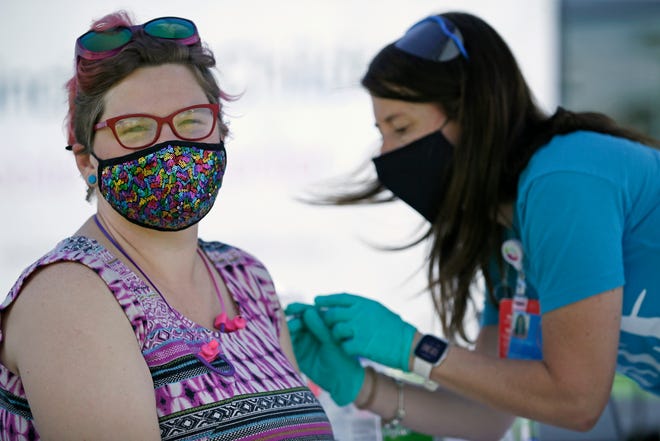
Yeah, yeah, yeah, mm.
The history behind black and orange as Halloween colors
Like trick-or-treaters and haunted houses, the color combination of black and orange is instantly synonymous with Halloween.Every October these hues start to pop up in the form of lawn decorations, costumes and candy offerings at the grocery store, signaling the start of the spookiest season of the year. Though it's widely accepted that black and orange are the official colors of this holiday, you may be wondering why those two specific ones were chosen. The full story starts 2,000 years ago when the origins of Halloween began. According to History.com, this holiday can be traced back to the ancient Celtic festival of Samhain, which took place in an area spanning modern-day Ireland, France, and the United Kingdom. The festival developed as a precursor to the new year, which for Celts began on Nov. 1 and anticipated the beginning of long, cold winters that would result in many deaths. Because of these grim associations, the Celts held the belief that the night before the new year, the worlds of the living and dead became blurred. They celebrated Samhain the night of Oct. 31, the date when ghosts were believed to come back from the dead. As part of the festivities, Celtic priests, also called Druids, held sacred bonfires, wore costumes, and told each other’s fortunes to appease the gods and welcome the spirits of their ancestors.As Isle of Halloween explains, the reason we see so much black on Halloween stems from the festival of Samhain and its emphasis on death. The color black symbolizes death across several cultures, which is why it’s also prominent in Mexican celebrations of Día de los Muertos, or the Day of the Dead, which occurs around the same time of year. Other reasons black has stuck as emblematic of the holiday include its associations with nighttime, as well as black cats, spiders, cauldrons, bats, and similar Halloween iconography.Orange, on the other hand, offers a sharp contrast to this gloom and doom. Bustle has pointed out the deliberate choice of orange as a bright and lively color to form the "opposite" of Halloween black. Isle of Halloween explains that the color orange historically represents the bounty of Fall harvests, the changing color of the leaves, and fires that warm up the night. It is also of course associated with pumpkin carving, a Halloween tradition that came about in the 19th century when Irish immigrants arrived in the U.S. They had their own pastime of carving turnips and potatoes, but soon found pumpkins, a fruit native to America, worked much better. Even though Halloween is an ever-evolving holiday, with new trendy costumes, movies to watch, and festive recipes to try each year, the colors black and orange don’t seem to be going anywhere. With such deep historical significance tied to Oct. 31, and their widespread cultural connotations, it’s hard to imagine these colors could signify anything else. The good news is that it means our favorite black and orange decorations will never go out of style.
Like trick-or-treaters and haunted houses, the color combination of black and orange is instantly synonymous with Halloween.
Every October these hues start to pop up in the form of lawn decorations, costumes and candy offerings at the grocery store, signaling the start of the spookiest season of the year. Though it's widely accepted that black and orange are the official colors of this holiday, you may be wondering why those two specific ones were chosen.
The full story starts 2,000 years ago when the origins of Halloween began. According to History.com, this holiday can be traced back to the ancient Celtic festival of Samhain, which took place in an area spanning modern-day Ireland, France, and the United Kingdom. The festival developed as a precursor to the new year, which for Celts began on Nov. 1 and anticipated the beginning of long, cold winters that would result in many deaths.
Because of these grim associations, the Celts held the belief that the night before the new year, the worlds of the living and dead became blurred. They celebrated Samhain the night of Oct. 31, the date when ghosts were believed to come back from the dead. As part of the festivities, Celtic priests, also called Druids, held sacred bonfires, wore costumes, and told each other’s fortunes to appease the gods and welcome the spirits of their ancestors.
As Isle of Halloween explains, the reason we see so much black on Halloween stems from the festival of Samhain and its emphasis on death. The color black symbolizes death across several cultures, which is why it’s also prominent in Mexican celebrations of Día de los Muertos, or the Day of the Dead, which occurs around the same time of year. Other reasons black has stuck as emblematic of the holiday include its associations with nighttime, as well as black cats, spiders, cauldrons, bats, and similar Halloween iconography.
Orange, on the other hand, offers a sharp contrast to this gloom and doom. Bustle has pointed out the deliberate choice of orange as a bright and lively color to form the "opposite" of Halloween black. Isle of Halloween explains that the color orange historically represents the bounty of Fall harvests, the changing color of the leaves, and fires that warm up the night. It is also of course associated with pumpkin carving, a Halloween tradition that came about in the 19th century when Irish immigrants arrived in the U.S. They had their own pastime of carving turnips and potatoes, but soon found pumpkins, a fruit native to America, worked much better.
Even though Halloween is an ever-evolving holiday, with new trendy costumes, movies to watch, and festive recipes to try each year, the colors black and orange don’t seem to be going anywhere. With such deep historical significance tied to Oct. 31, and their widespread cultural connotations, it’s hard to imagine these colors could signify anything else. The good news is that it means our favorite black and orange decorations will never go out of style.
Source link










